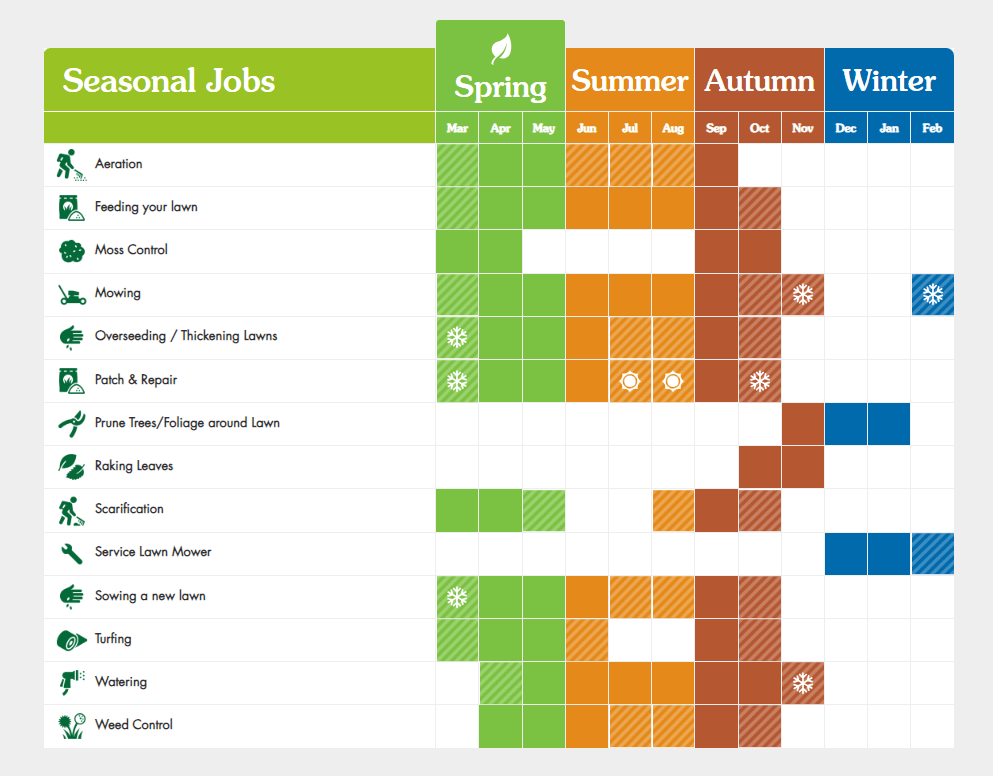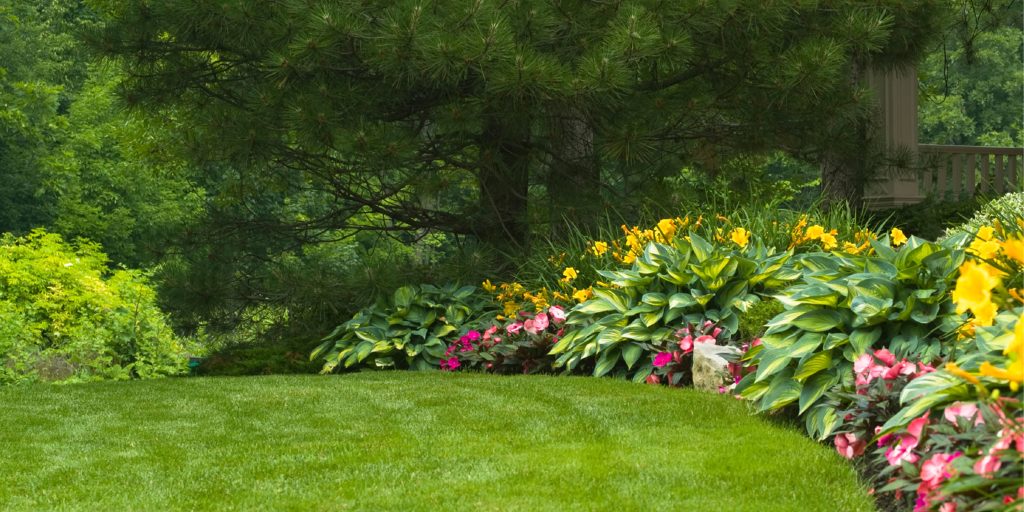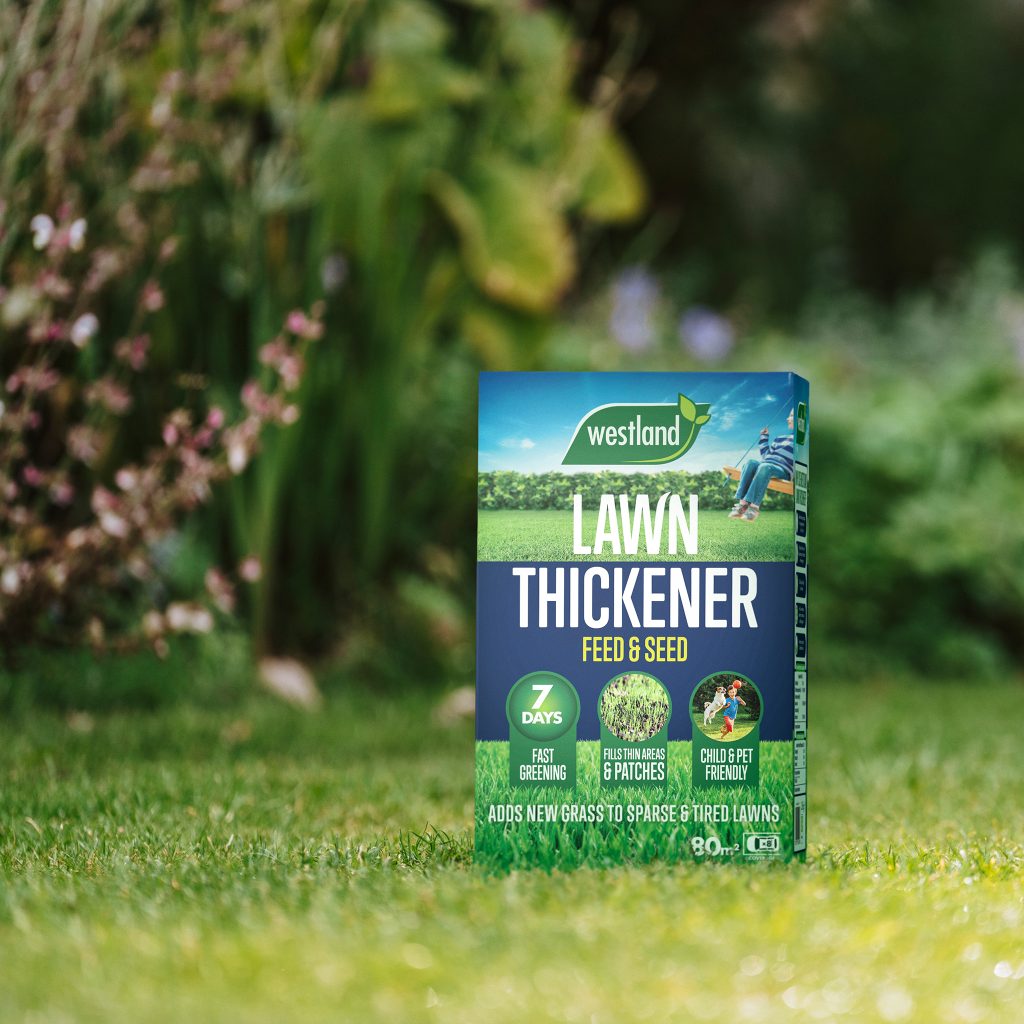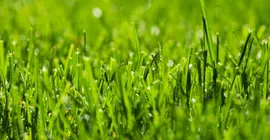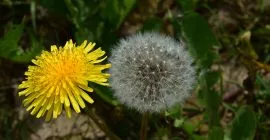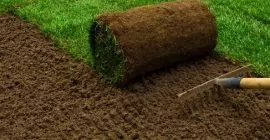A lush green lawn isn’t just a beautiful and picturesque addition to your home, it’s also a living ecosystem that requires the proper nourishment to thrive. To have a healthy, thick and green lawn it is important to feed and condition it. Just like people, the grass needs to source the right nutrients to grow and survive. Without these essential nutrients, it will be thin and turn yellow in colour. It can also become out-competed by weeds because they grow more easily than lawns with low nutrient conditions. Diseases start to take hold, meaning the lawn becomes a lot weaker and has more weeds. Overall, without feeding your lawn, the appearance will deteriorate even more.
Why feed your lawn
- Promote growth and recovery
- Enhance colour and appearance
- Strengthens resistance to stress
- Improves soil health
- Sustains long term lawn health
Use lawn feed regularly as part of your lawn maintenance programme. By doing this, the lawn will become thicker and greener and unwelcome weeds and moss are less likely to take hold. Learn more about weeds and moss in our lawn care hub.
Whats in lawn feed?
The nutrients in lawn feed are essential for healthy functioning of the plant. The main nutrients found are in lawn feed are as follows:
- (N) Nitrogen – An essential building block for new grass growth and essential for healthy green growth. If the grass is yellowing/pale in colour then this indicates low levels of Nitrogen and leads to poor grass quality.
- (P) Phosphorous – Develops and encourages a strong grass root system. Which in turn makes the lawn more resilient all year round and especially in dry weather.
- (K) Potassium – For grass durability and better hydration of the grass. This helps the lawn deal with drought and disease much better and will deliver a stronger, healthier lawn.
- (Fe) Iron – Boosts colour with a quick greening impact, helps plant metabolism and strengthens the grass.
But, where do the nutrients in the soil go?
The nutrients in the soil will gradually be released to the grass plants as the soil weathers. However, a large number of the nutrients in the soil can be lost. Some of the nutrients can be locked away in forms that are unavailable to plants. Some of the nutrients such as nitrogen compounds are very soluble and tend to get washed out of the soil by rainfall, meaning these nutrients are completely lost. The biggest source of loss of nutrients in lawns is through mowing. As the grass grows, it takes up the nutrients, but when we mow the lawn, we chop off a large amount of the leaves and take away the nutrients. Nutrients can be lost from the soil in many different ways, and this is why we need to feed the lawns to replenish them.
What lawn feed do I use and how often do I apply it?When deciding which lawn feed to use, it is important to look at the NPK;
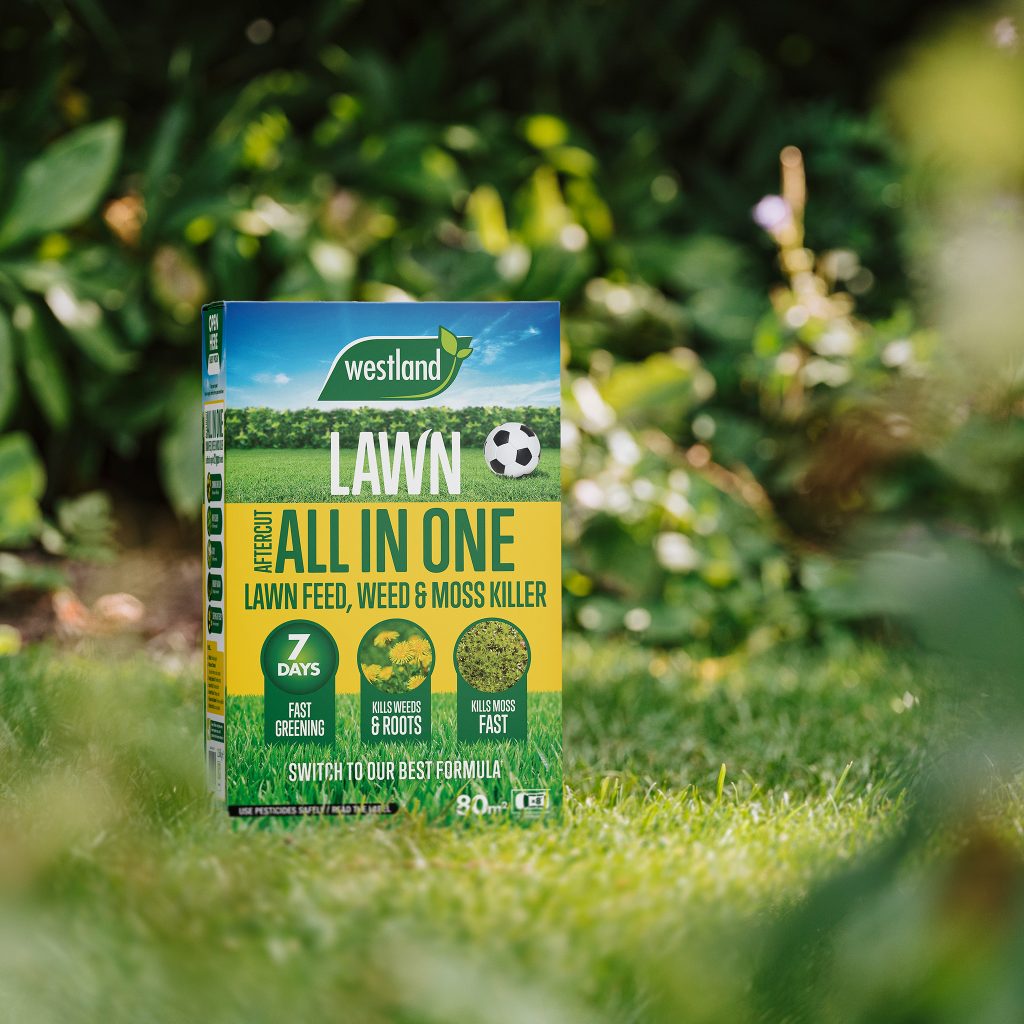
FEED, WEED & CONTROL MOSS
Aftercut All In One contains a large amount of nitrogen with NPK 10-2-2 as well as weed killer and moss killer, for a lovely green lawn. However, this can only be used twice a year.
So during the spring, feed your lawn with Aftercut All in One, which will feed and condition your lawn, as well as getting rid of 12 types of weeds and moss. The triple action treatment will also help to green your lawn in just 7 days! Simply apply the granules from May to August when the grass is actively growing, and make sure to read the instructions to avoid over dosing.
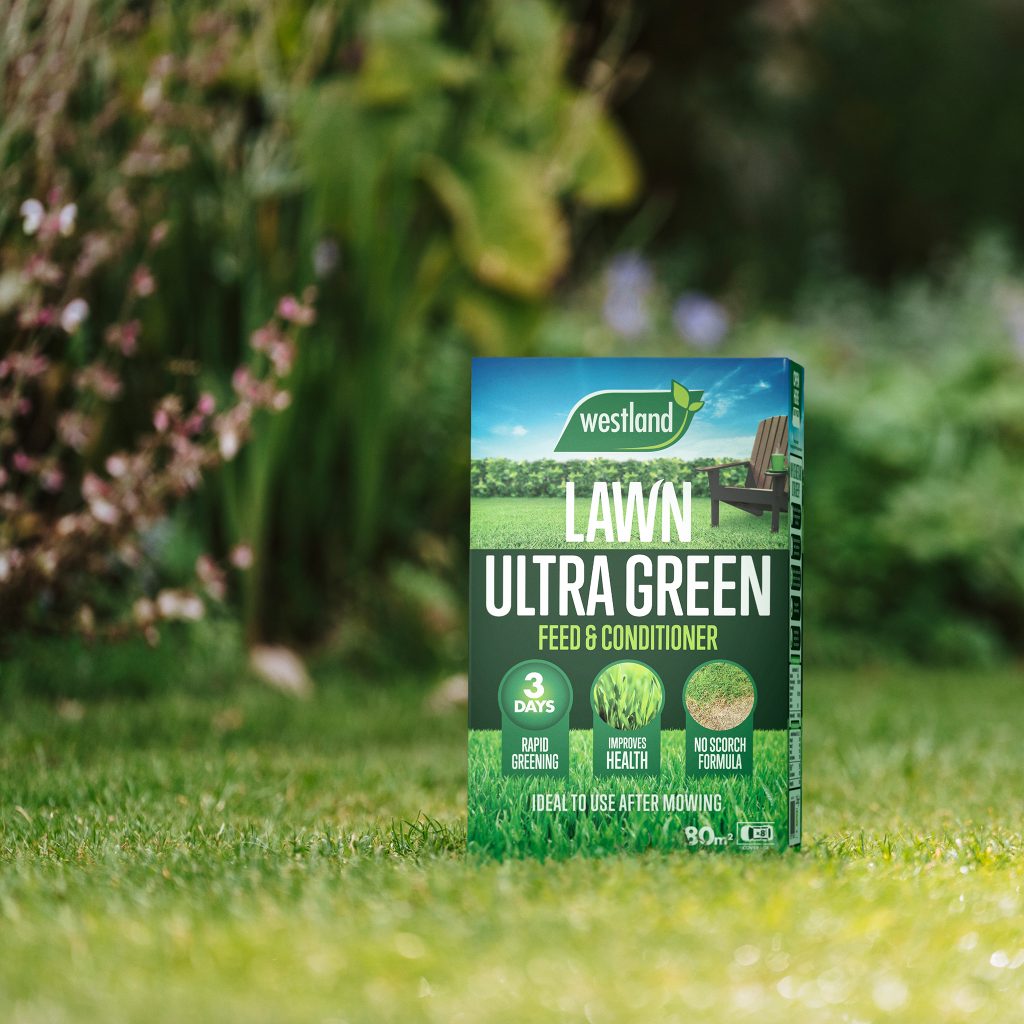
FEED AND CONDITION
However, Aftercut Ultra Green has a lot less nitrogen in it with NPK 4-1-4. This means you can apply it every 3-4 weeks from February to September which gives a steady supply of nutrients for the lawn. It will give you rapid 3 day greening as well as no scorching risk! Perfect if you’re new to lawn care programmes.
During late spring and summer, feed your lawn with Aftercut Ultra Green every 3-4 weeks to keep your grass in tip top condition. Simply apply granules after mowing. This contains balanced nitrogen to prevent scorching and keep grass green and in top condition. Added Potash, Iron and Magnesium help to create a hard wearing lawn that suppresses weeds and moss.
FEED AND THICKEN
Westland Lawn Thickener Feed & Seed includes a high quality lawn seed that will germinate in only 2-3 weeks. It’s specific slow release nutrient package will also help to green your lawn in just 7 days, as well as help to support the growing seedlings.
Made from natural ingredients, its safe to use around children and pets immediately after application. It’s perfect for filling in sparse patches and thickening up your existing lawn.
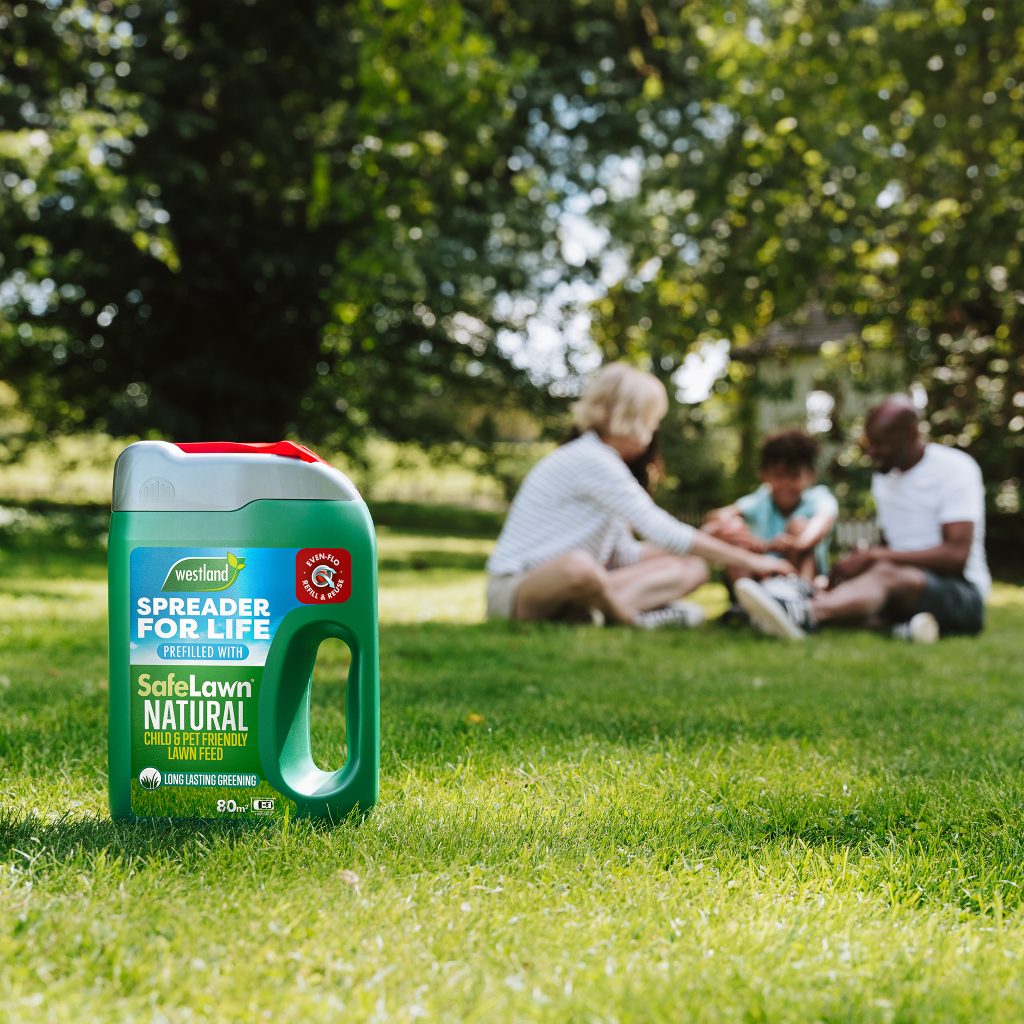 CHILD & PET FRIENDLY FEED
CHILD & PET FRIENDLY FEED
Last but, not least – Westland SafeLawn, the all natural child and pet friendly to feeding your lawn with long lasting greening. This formula contains allot less iron than other feeds meaning a reduced risk to staining and transferring the product onto hard surfaces. Children and pets can play safely straight after application.
The nutrient package in SafeLawn will give you a lasting green and healthy lawn, while also promoting recovery from winter during the spring months. As your lawn becomes stronger, it will start to outcompete both weeds and moss.
For specific advice on feeding and conditioning your lawn throughout the year, take a look at our seasonal lawn calendar.
